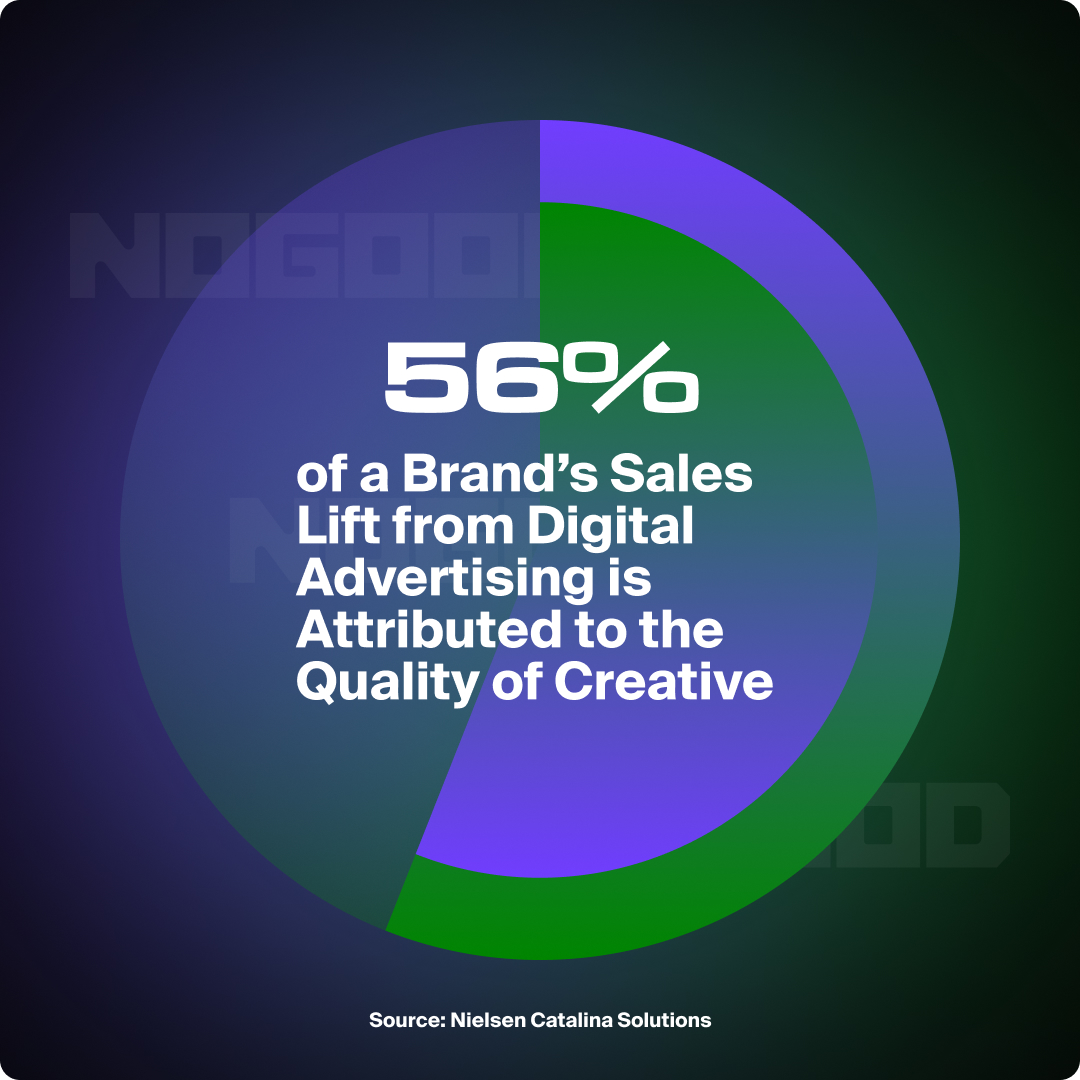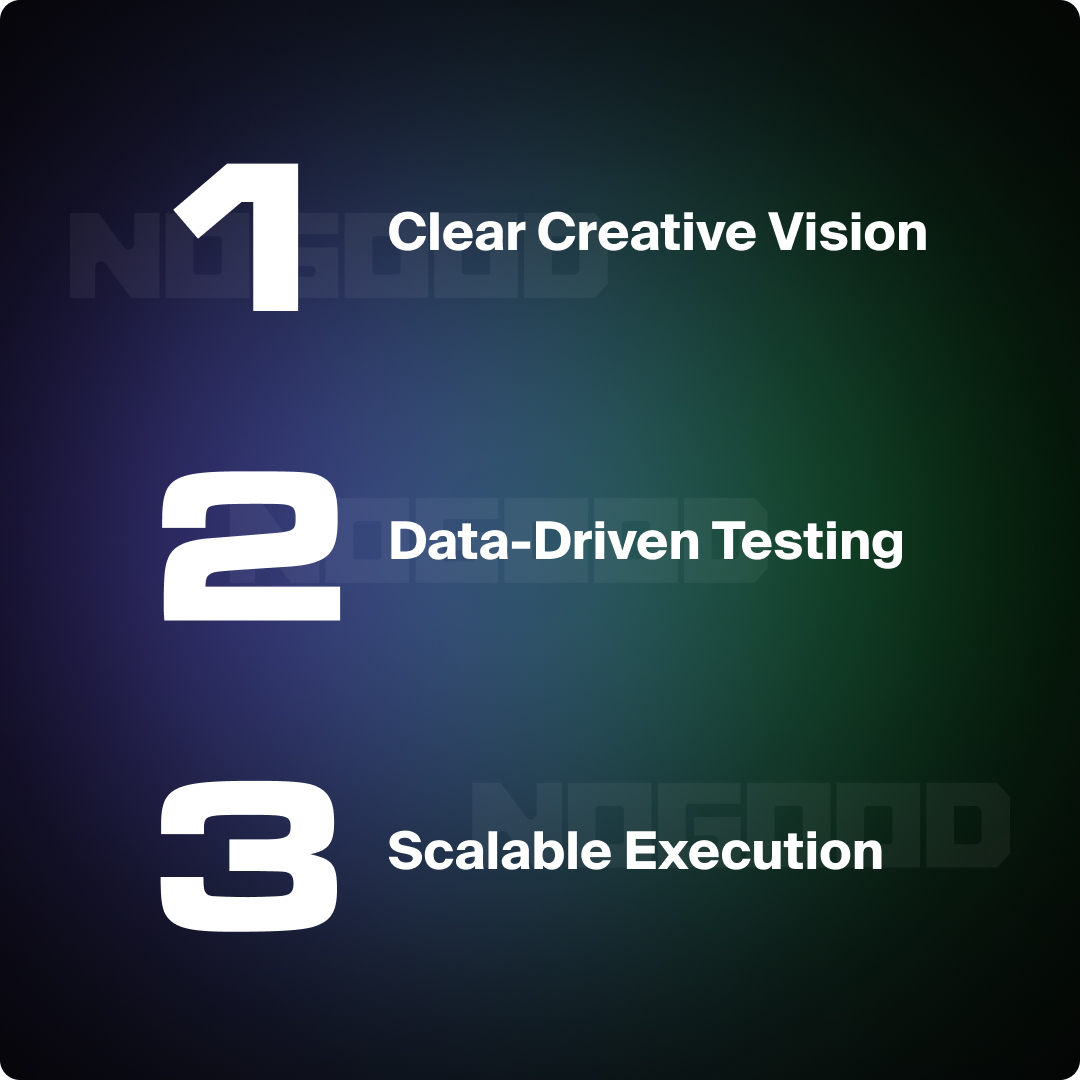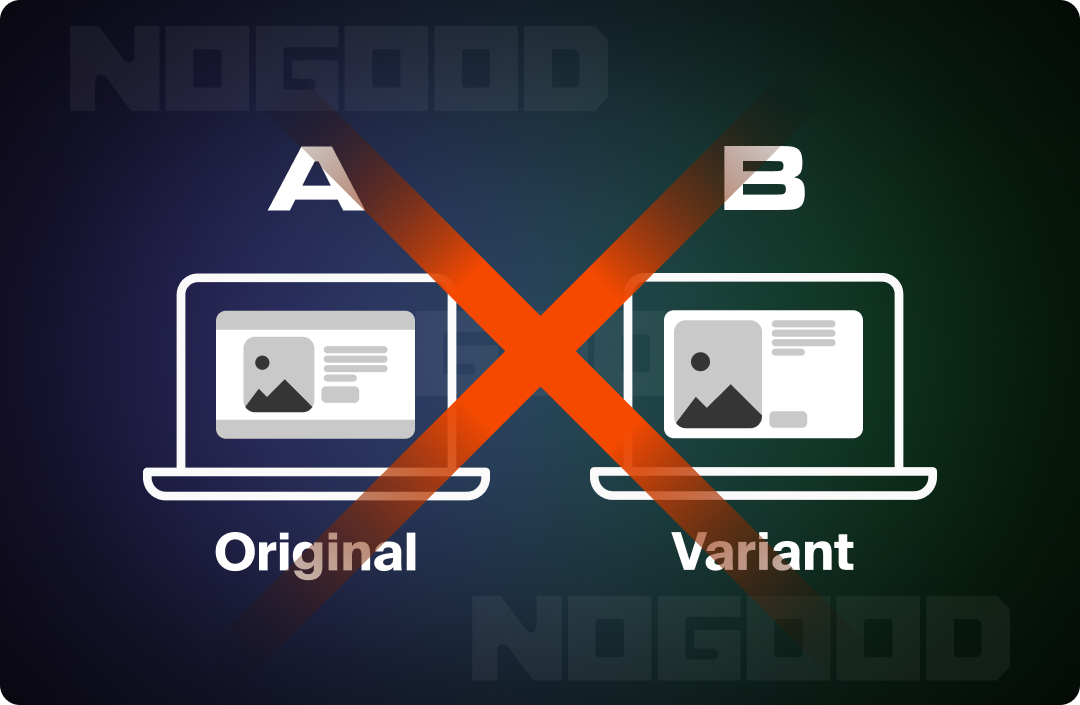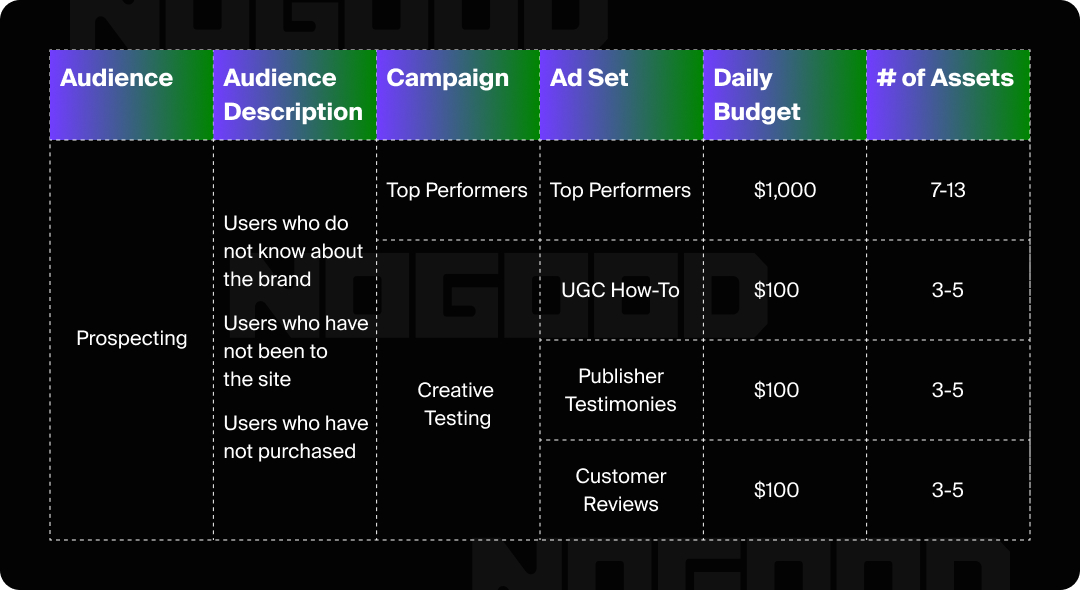
What’s the number one most important lever we have to drive success on paid social campaigns? Based on the title of this blog you probably guessed it – creative. To set yourself up for success, your brand needs to have a clear vision for the creative, a data-driven testing strategy, and an execution plan that’s scalable. Although creative has always been imperative for success, it’s increasingly important due to the evolution of social platform algorithms in recent years.
If you wanted to ensure you were targeting your desired users several years ago, the best strategy was to design hyper-specific audiences based on interests, behaviors, or past purchases. But in a post-iOS 14 world, platforms have responded by introducing and expanding campaign types enabled by increased automation; Advantage+ campaigns are now top performance drivers on Meta, and Pinterest recently released a similar product.
With these changes, advertisers have less visibility and control over user targeting. This phenomenon has created the common phrase, “creative is the new targeting.” At this point, the best way to reach a desired audience is to craft creative tailored to them instead of using particular targeting dimensions at the ad set level.
For now and the foreseeable future, we still have control over the creative we put into the market and how we create iterations based on performance. We recommend putting time and effort into crafting a strategy that is scalable on paid platforms and reaches your target users.
We’ve already mentioned the three things you really need for winning creative: a clear vision, data-driven testing, and a scalable execution plan. Let’s dive into the details for each of these key 3 aspects.

Clear Vision for Creative
You can have the most talented designers in the world, but if you’re unclear in the direction you give them, there’s no way you’ll be pleased with their output. It’s best to give your creative team specific guidelines so they know how much room they have to ‘play’ in.
Your team must know what you’ve done before, what worked, what didn’t, and how you want to evolve in this next phase. Using examples from other brands you admire and want to emulate is extremely helpful to bridge the gap between your descriptor words and the vision you want to achieve.
On top of the aesthetic vision, it’s important to align on the purpose of creative within your marketing strategy. Is it produced to look pretty, drive results, or both? If the answer is both, can you be more specific with ‘results?’ Do you want a certain CTR or CPA?
Drill down to what’s important to your particular business and how creative can help you achieve your overall goals. Once you feel solid in that, clearly communicate your needs to your team so they can pitch ideas that ladder up to your measurable goals.
Data-Driven Testing
Creative, by nature, tends to be subjective. You can put 10 people in a room, and they may all have different thoughts on what the ‘best’ creative is from a particular batch of assets. On the other hand, data is much more objective.
It’s normal and good for stakeholders to have hypotheses about what will resonate best with audiences and why, but at the end of the day, it’s crucial to rely on data to make decisions about what should stay live, what should be paused, and how we should iterate for future variations.
Tracking this performance in real-time with a creative matrix is a great way to make sure everyone on the team is aligned on what’s working and what isn’t.
Scalable Execution
Once you’ve established your vision for creative and committed to data-driven testing, you want to be able to execute your strategy at scale. As you test hypotheses methodically and with data to call your tests, prioritize speed over perfection.
The more tests you can run with actionable results, the more you’ll learn about your users. This is crucial to growing your business and meeting the overall goals you’ve set. It’s no secret that the special sauce to sustainable growth marketing is rapid experimentation.
Every time you launch creative, you should be iterating on something that’s performing well and introducing a net-new concept to market. It may feel safer to only churn out assets that resemble ads that have ‘worked,’ but if you rest on your laurels, you’ll never find the next great ad for your brand. If you balance safer bets with bigger ones, you’ll be able to scale your creative testing and unlock new learnings along the way.

5 Most Common Mistakes to Avoid in Creative Testing
1. Strict A/B Testing
Several brands will only call tests after they’ve run extensive A/B testing. We value speed over perfection and believe once you’ve spent against test assets in their own environment (ad set or ad group), you should have sufficient learnings to understand if they’re resonating or not.
Most clients will look at conversions or revenue driven at efficiency metrics such as CPA, CAC, or ROAS to determine success. Rigid A/B testing will slow you down and hurt performance in the long run because it will take you longer to get actionable results.
2. Falling into the AI Optimization Trap
Many platforms, but especially Meta, have recently been pushing AI optimizations that alter your creatives. They do this with positive intentions by promising increased conversions if you check the boxes in the platform that will give them power to alter your creatives how they see fit.
This is a good idea in theory, but these optimizations often make your creative look sloppy, and it can create a poor experience for your users. We recommend keeping these turned off until Meta is able to significantly improve the product.
3. Not Creating Roadmaps
You should build out a roadmap of the tests you want to run for the next month and follow it diligently. If you can sign off on briefs from your team at the top of the month, and they have the time and freedom to execute against them in batches, they’ll be much more efficient.
This goes beyond giving approval on general creative themes/tests. If you can approve in-asset copy, products featured, and the test proposed, you’re setting your team up for more success. These roadmaps should be fluid to the point that if you have a million-dollar-idea that must be tested, it can be slotted in. But barring that incredible exception, align on briefs with your team and give them autonomy to execute.
4. Pausing Creatives Too Quickly
We’ve all been in a position when Total Biz isn’t doing well and we’re looking for places to cut spend. Inefficient creative testing for newly launched assets may be one of the first places you’d want to get back some easy efficiency gains.
We recommend keeping assets live for at least a week before pausing anything, although of course there may sometimes be exceptions. Give them a chance to succeed, and if they don’t, then feel free to pause them out.
5. Not Testing Enough
If your creative team has capacity, you should be testing new concepts and iterations of past performers every week. This is even more important ahead of tentpole periods to ensure you can make the most of high-converting times for the business such as BFCM for e-comm. You shouldn’t be afraid of trying something new – it just might work and unlock incremental conversions for the brand.
How Does This Come to Life?
Below is an example of what this might look like for a typical brand just starting out with creative testing.
This setup focuses on one audience, Prospecting, which consists of users who are not familiar with the brand. One campaign called “Top Performers” has all the assets that perform efficiently at scale; these are tried and true concepts. The majority of the budget goes to these assets because they’re so strong.
The second campaign is the creative testing campaign, which tests several concepts at a much lower budget. Top performers are copied and pasted or ‘graduated’ into the top performers ad set to compete against other tried and true concepts. As a general rule of thumb, 30% of spend should go to creative testing.
New concepts should be tested every week or every two weeks, and top performers should be variated on to generate even more revenue/leads/purchases for the business.

Supercharge Your Strategy with Creative Testing
Now you’re prepared to build a creative strategy that is tailored to your business. First you’ll set a clear vision, then you’ll commit to data-driven testing, and finally you’ll build a scalable execution plan. One last word of advice – keep in mind that it’s not necessarily bad if creative ‘fails.’ Instead, this result gives you another learning that will help you optimize future variations to drive stronger results with your target audience.






